Refine search
Actions for selected content:
120 results
Chapter 6 - Praxis Epistemology III
-
- Book:
- Vico and the Maker's Knowledge Tradition
- Published online:
- 27 June 2025
- Print publication:
- 17 July 2025, pp 185-221
-
- Chapter
- Export citation
Chapter 8 - What Does Authenticity Do in Being and Time?
-
-
- Book:
- Heidegger's <i>Being and Time</i>
- Published online:
- 28 June 2025
- Print publication:
- 26 June 2025, pp 158-176
-
- Chapter
- Export citation
Chapter 9 - Why Ask Why? Retrieving Reason in Being and Time
-
-
- Book:
- Heidegger's <i>Being and Time</i>
- Published online:
- 28 June 2025
- Print publication:
- 26 June 2025, pp 177-197
-
- Chapter
- Export citation
Chapter 7 - Authenticity, Truth, and Cultural Transformation
-
-
- Book:
- Heidegger's <i>Being and Time</i>
- Published online:
- 28 June 2025
- Print publication:
- 26 June 2025, pp 125-157
-
- Chapter
- Export citation
Chapter 2 - The Trouble with the Ontological Difference
-
-
- Book:
- Heidegger's <i>Being and Time</i>
- Published online:
- 28 June 2025
- Print publication:
- 26 June 2025, pp 31-48
-
- Chapter
- Export citation
2 - The Ethos of Originalism
- from Part II - Key Rhetorical Concepts Animating Contemporary American Law
-
-
- Book:
- Rhetorical Traditions and Contemporary Law
- Published online:
- 02 May 2025
- Print publication:
- 22 May 2025, pp 17-41
-
- Chapter
-
- You have access
- Open access
- HTML
- Export citation
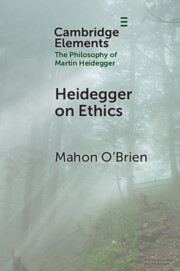
Heidegger on Ethics
-
- Published online:
- 25 March 2025
- Print publication:
- 17 April 2025
-
- Element
- Export citation
Towards a phenomenological ontology of war
-
- Journal:
- Review of International Studies / Volume 51 / Issue 4 / July 2025
- Published online by Cambridge University Press:
- 24 March 2025, pp. 707-725
- Print publication:
- July 2025
-
- Article
- Export citation
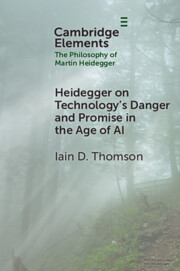
Heidegger on Technology's Danger and Promise in the Age of AI
-
- Published online:
- 26 February 2025
- Print publication:
- 20 March 2025
-
- Element
- Export citation
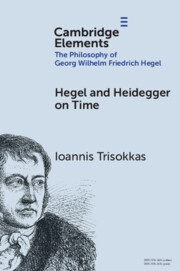
Hegel and Heidegger on Time
-
- Published online:
- 20 February 2025
- Print publication:
- 06 March 2025
-
- Element
- Export citation
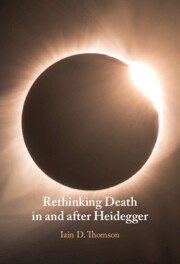
Rethinking Death in and after Heidegger
-
- Published online:
- 18 December 2024
- Print publication:
- 05 December 2024
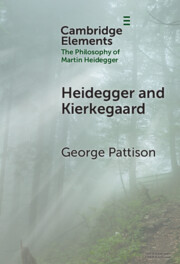
Heidegger and Kierkegaard
-
- Published online:
- 12 December 2024
- Print publication:
- 16 January 2025
-
- Element
- Export citation
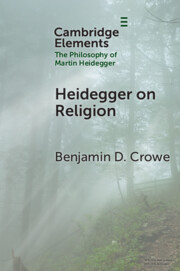
Heidegger on Religion
-
- Published online:
- 11 December 2024
- Print publication:
- 16 January 2025
-
- Element
- Export citation
7 - Critical Afterlives of Heidegger’s Phenomenology of Existential Death in Sartre, Beauvoir, Levinas, Agamben, and Derrida
- from Part II - Rethinking Death after Heidegger
-
- Book:
- Rethinking Death in and after Heidegger
- Published online:
- 18 December 2024
- Print publication:
- 05 December 2024, pp 208-238
-
- Chapter
- Export citation
6 - Rethinking Levinas on Heidegger on Death
- from Part II - Rethinking Death after Heidegger
-
- Book:
- Rethinking Death in and after Heidegger
- Published online:
- 18 December 2024
- Print publication:
- 05 December 2024, pp 181-207
-
- Chapter
- Export citation
9 - Why It Is Better for a Dasein Not to Live Forever, or Being Pro-Choice on the Immortality Question
- from Part II - Rethinking Death after Heidegger
-
- Book:
- Rethinking Death in and after Heidegger
- Published online:
- 18 December 2024
- Print publication:
- 05 December 2024, pp 267-285
-
- Chapter
- Export citation
4 - Death and Rebirth in Being and Time’s Perfectionist Philosophy of Education
- from Part I - Rethinking Death in Heidegger
-
- Book:
- Rethinking Death in and after Heidegger
- Published online:
- 18 December 2024
- Print publication:
- 05 December 2024, pp 130-156
-
- Chapter
- Export citation
3 - Heidegger on Death and the Nothing It Discloses
- from Part I - Rethinking Death in Heidegger
-
- Book:
- Rethinking Death in and after Heidegger
- Published online:
- 18 December 2024
- Print publication:
- 05 December 2024, pp 100-129
-
- Chapter
- Export citation
8 - Heidegger’s Mortal Phenomenology of Existential Death and the Postmetaphysical Politics of Ontological Pluralism
- from Part II - Rethinking Death after Heidegger
-
- Book:
- Rethinking Death in and after Heidegger
- Published online:
- 18 December 2024
- Print publication:
- 05 December 2024, pp 239-266
-
- Chapter
- Export citation
1 - Death and Demise in Being and Time
- from Part I - Rethinking Death in Heidegger
-
- Book:
- Rethinking Death in and after Heidegger
- Published online:
- 18 December 2024
- Print publication:
- 05 December 2024, pp 3-73
-
- Chapter
- Export citation
